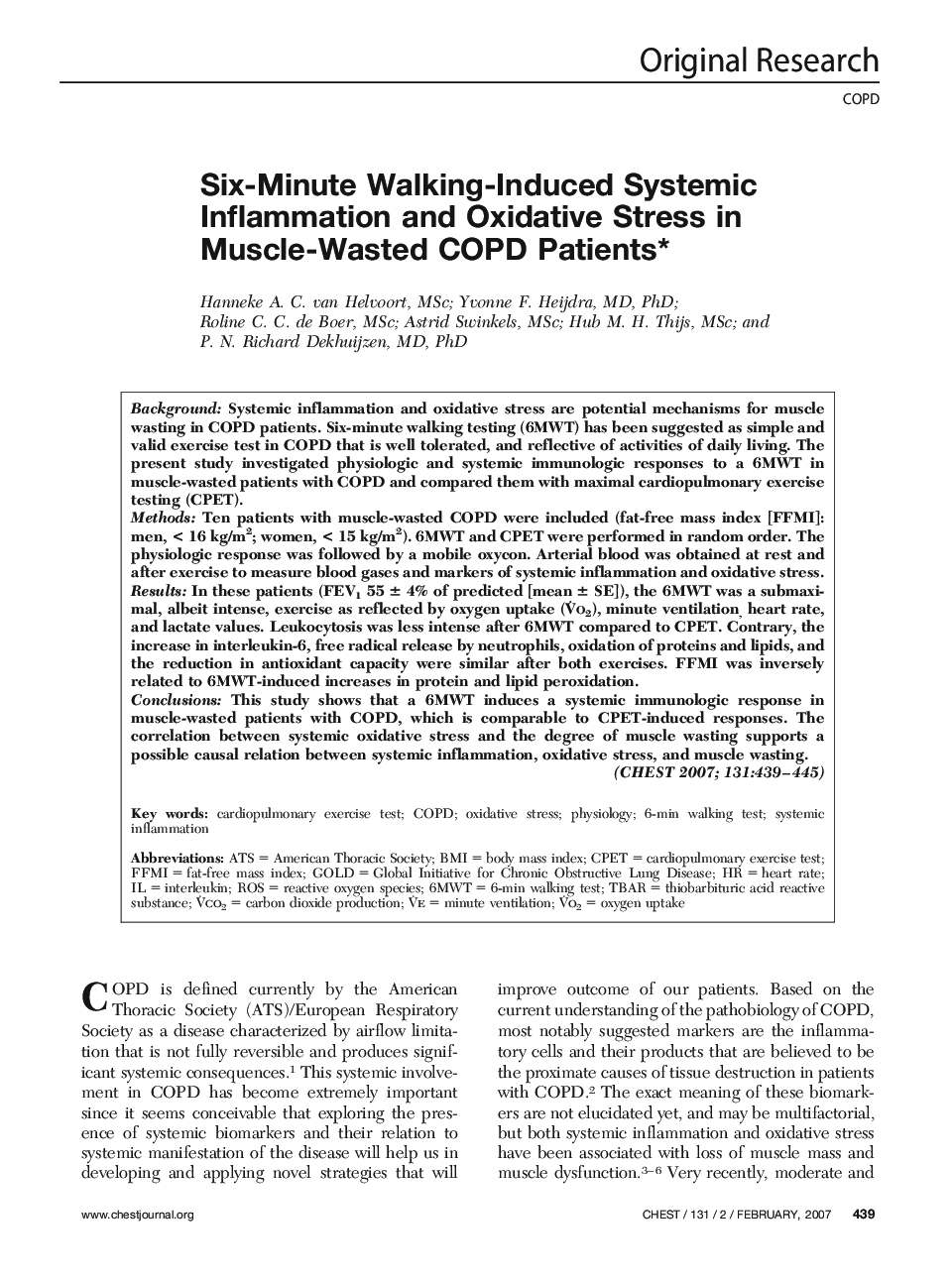| Article ID | Journal | Published Year | Pages | File Type |
|---|---|---|---|---|
| 2906574 | Chest | 2007 | 7 Pages |
Background:Systemic inflammation and oxidative stress are potential mechanisms for muscle wasting in COPD patients. Six-minute walking testing (6MWT) has been suggested as simple and valid exercise test in COPD that is well tolerated, and reflective of activities of daily living. The present study investigated physiologic and systemic immunologic responses to a 6MWT in muscle-wasted patients with COPD and compared them with maximal cardiopulmonary exercise testing (CPET).Methods:Ten patients with muscle-wasted COPD were included (fat-free mass index [FFMI]: men, < 16 kg/m2; women, < 15 kg/m2). 6MWT and CPET were performed in random order. The physiologic response was followed by a mobile oxycon. Arterial blood was obtained at rest and after exercise to measure blood gases and markers of systemic inflammation and oxidative stress.Results:In these patients (FEV155 ± 4% of predicted [mean ± SE]), the 6MWT was a submaximal, albeit intense, exercise as reflected by oxygen uptake (Vo2), minute ventilation,heart rate, and lactate values. Leukocytosis was less intense after 6MWT compared to CPET. Contrary, the increase in interleukin-6, free radical release by neutrophils, oxidation of proteins and lipids, and the reduction in antioxidant capacity were similar after both exercises. FFMI was inversely related to 6MWT-induced increases in protein and lipid peroxidation.Conclusions:This study shows that a 6MWT induces a systemic immunologic response in muscle-wasted patients with COPD, which is comparable to CPET-induced responses. The correlation between systemic oxidative stress and the degree of muscle wasting supports a possible causal relation between systemic inflammation, oxidative stress, and muscle wasting.
